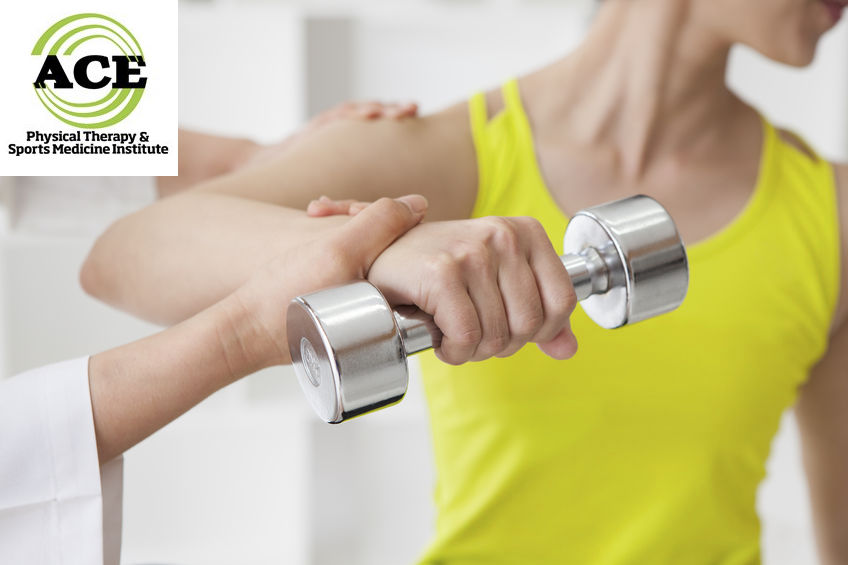SUBACROMIAL BURSITIS

Tid Bits of Info
- The SAB protects the superior aspect of the rotator cuff.
- The Subacromial space averages 9 mm in height which is big enough to allow all shoulder motion to occur.
- A healthy SAB is an average of 2 mm thick and an injured SAB can be double the normal thickness.
- Common symptoms include pain, decreased motion, inability to sleep on the involved side and weakness.
- Seek advice and treatment from a Physical Therapist if you develop shoulder pain.
Shoulder pain can range from uncomfortable to debilitating. The intense shooting pain in the shoulder can affect the arm, elbow, and wrist. It can even limit your ability to take off or put on a shirt, reach for a cup in the cabinet, or catch a ball. Shoulder pain is one of the most common ailments that healthcare professionals treat on a daily basis. While these symptoms can arise from many anatomical structures, the Subacromial bursa (SAB) is often the primary structure that leads to pain and limits function.
The bursa is supposed to protect the tendons of the rotator cuff, but in many instances, the bursa gets irritated and inflamed (bursitis). This can cause so much pain that person suffering from this condition can barely use the involved arm.
The shoulder joint is comprised of three bones: scapulae, clavicle, and humerus. The head of the humerus rests on the Glenoid fossa of the scapula where it articulates when the muscles of the shoulder contract to move the arm. The head is held “against” the glenoid surface via the four Rotator Cuff (RTC) muscles that act in unison and form a force couple when the arm is moved. The space above the humeral head is the Sub Acromial (SA) space. The Acromion of the scapulae forms a “ceiling” over the joint space which “houses” the top muscles of the RTC and the Subacromial Bursa. The SA space is small, averaging approximately 9 mm and it is sufficient for complete movement of the shoulder.
The SAB is usually injured when someone raises a hand above shoulder level repeatedly. Sports such and gymnastics, baseball, tennis, weightlifting, and swimming are some common sports that cause the bursa to get inflamed. Almost anyone that raises their arm above shoulder level repeatedly can experience the symptoms of Subacromial bursitis.
Two common findings can lead to SAB irritation. The SAB can extend into the area of the SA space that is directly under the acromioclavicular joint. As we age, this joint can become arthritic and develop bone spurs. At times, the bone spurs can grow into the SA space and “rub” the SAB causing it to become inflamed and painful. A second common cause of SAB irritation occurs when the rotator cuff is damaged. The rotator cuff muscles have to contract together and create a force couple that keeps the humeral head in the middle of the glenoid fossa. If the rotator cuff is damaged the head can move abnormally and rise upward. The SAB can get “pinched” or an impinged and become inflamed.
Diagnosis of this condition begins with a description of symptoms from the patient. Often the painful condition appears to occur insidiously, but after probing the patient can usually determine an activity that involved raising their arm above shoulder level. The patient usually reports difficulty sleeping on the involved side and the pain can wake the patient up if the symptoms are acute and severe. Any time the patient raises the involved arm above shoulder level or places the hand on the involved arm behind the back the symptoms worsen or become very prominent.

Treatment of this condition should include anti-inflammatory medication, ice and a thorough, well-designed exercise routine that is geared at developing strength, muscular endurance, and flexibility in the injured shoulder. Seeking help from a Physical Therapist is recommended because the can develop a treatment plan designed for your needs. They will evaluate your shoulder and then treat it with modalities to reduce the inflammation and pain followed by an exercise routine and possibly the use of manual therapy to increase motion. Seeking the help of a Physical Therapist is easy and does not require a doctor’s prescription. Your insurance plan might require a referral from your general practitioner.
Subacromial bursitis is a common problem that affects all walks of life. The most common cause of the condition is performing an activity that involves repeatedly raising an arm above shoulder level. The natural aging process and/or an injury to the muscles of the shoulder joint can lead to abnormal movement in the joint which eventually irritates the SAB. This condition can usually be treated conservatively and successfully in a formal Physical Therapy setting.
























